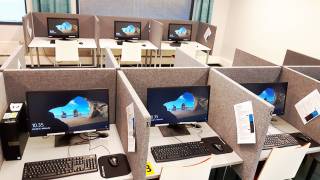Collaborative Learning Through Flat Hierarchy
In Finland universities, it is common to see a flat hierarchy between the lecturers and students. This flat structure cultivates an environment where students and professors engage in open dialogues, creating a positive feedback loop. Personally, I have had the opportunity to discuss research ideas with professors after classes and have meaningful discussions with them, which shows how remarkable the dynamics between the professors and students here are.
This flat structure cultivates an environment where students and professors engage in open dialogues, creating a positive feedback loop.
Moreover, the culture of open communication allows for constructive feedback from students to be actively embraced by professors. In one of my classes, one of my peers conveyed his struggle to understand the presentation style of a certain professor during classes. What surprises me is that the professor took that feedback seriously, and he is eager to understand what the issues were. In the subsequent week, there was a significant improvement in the teaching approach, which shows the commitment of the professors here to maintain the teaching quality.

Your Education, Your Way: Student Autonomy and Flexibility
The Finnish education system also emphasizes student autonomy and flexibility. In university, this approach goes even to the study plan for students. Students can formulate their study plan, which includes deciding which course they want to take, and which period they are taking it for. The courses offered are also truly diverse when compared to my home country, as I got to choose elective courses from different programs and departments.
I got to choose elective courses from different programs and departments.
Semester and Period System – How Does It Work?
In Finland, the academic calendar operates on a different system from the conventional semester systems that were used in various countries, including my home country. Instead of using the 2 semesters model, Finland uses a 5-period system where each period spans approximately 7 to 8 weeks. The periods are grouped into 3 distinct groups: the autumn semester, comprising two periods from August to December, the spring semester, with two periods spanning January to May, and a summer period.
The unconventional approach has been a unique experience for me. Courses that typically extend over an entire semester are compressed into concise 1 or 2-period study blocks. In my opinion, this condensed study block allows me to have more focus on the subject matter. Students can engage in extensive research and studies within a shorter time frame, and transition to different courses in the next period. This distinctive approach also implies that students must change their courses more frequently, preventing them from becoming bored with prolonged exposure to the same material.
Stress-Free Studying: The Comfort of Retake Options
The course examination in Finland typically is taken at the end of a period. What stands out is the option for students to retake exams if they are dissatisfied with their results or had urgent circumstances during the initial exam. This approach has been remarkably beneficial to everyone, as it alleviates the pressure of getting poor grades. I have found this system important in reducing my anxiety and it improves my overall academic grades.

I do not believe any system is flawless, but Finland is definitely moving in the right direction. The emphasis on student well-being, flexibility in study plans, and the supportive exam structure have made my academic journey here very positive and encouraging.



good